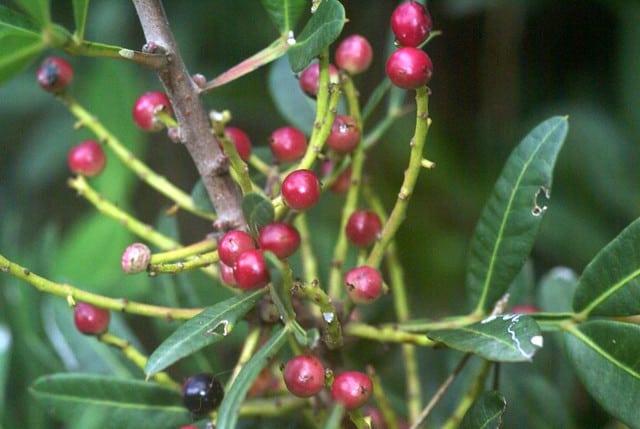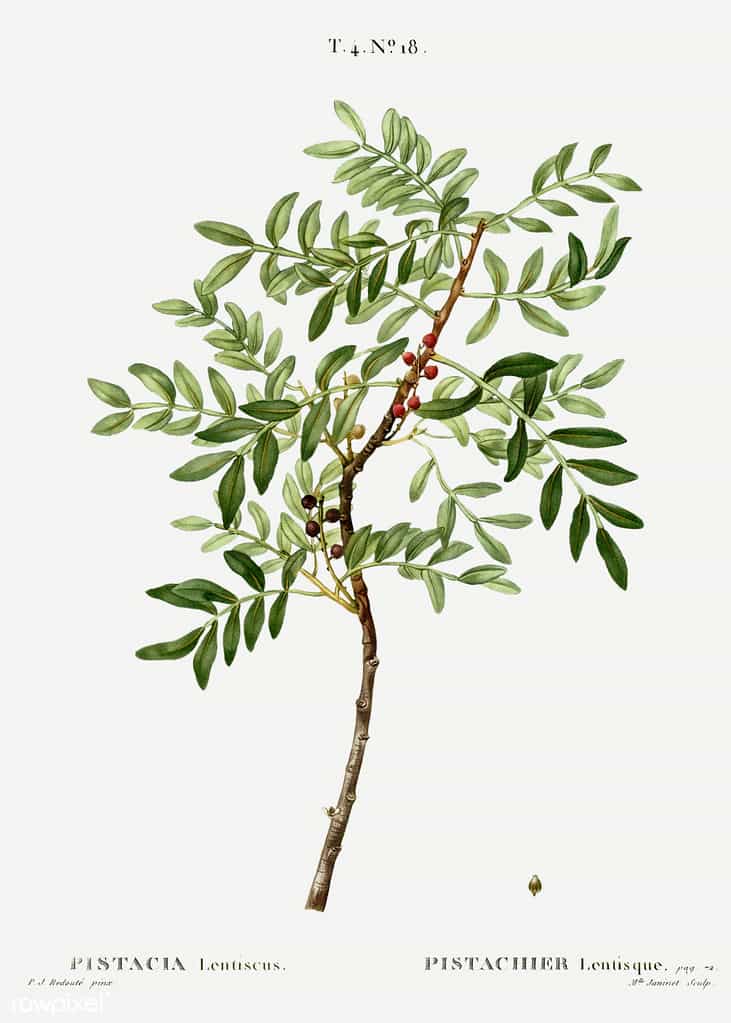When I am in the Sardinian countryside I always come across a wild plant that captures my interest. Last year, I discovered the Mastic or Lentisk Tree, which is known as Lentisco in Italian. This lead to some research about this shrub.
I even made some of the oil, but it was a lengthy and difficult process as I didn’t have any proper equipment or good information on the process. However, I did enjoy the taste of the oil in cooking and it made my skin feel revitalised.

Mastic Oil (or Lentisk Oil) is extracted from the berries of the Mastic or Lentisk shrub. The tree adapts well to a harsh environment and is commonly found in dry rocky areas. The shrub is native throughout the Mediterranean, often alongside species such as wild olive, Juniper, and Myrtle.
Lentisk has an intense resin scent, which also comes out in the oil. The oil is extracted from the small berries, which transition from white, to red, and to black when they are at full ripeness. The trunk also produces a resin, which is highly cultivated in the island of Chios, Greece.
Mastic Oil In Sardinia
Sardinia is one of the seven blue zones in the world, meaning the island is home to a high percentage of inhabitants making it past 100 years of age.
Mastic Oil is noted as being a piece of the puzzle to understanding why Sardinians live long healthy lives. In the past, most Sardinians would cook using Mastic oil. Later, olive oil became more widespread with technological improvements, allowing olives to be obtained and processed into oil more efficiently. Mastic oil would then be used mainly for medicine and as a fuel for oil lamps.
The Rediscovery Of Mastic Oil
There has been growing interest from top chefs in Sardinia and around the world for the distinctive flavour of Mastic Oil, but what stands out to me are the health benefits, which have led to a rise in the medical and cosmetic uses of this marvellous oil.

The Sardinian traditions were well aware of the remarkable health benefits and healing properties of Mastic Oil using it for many ailments such as skin problems. Hippocrates often referred to as the father of medicine, used Mastic for the prevention of digestive problems, colds, and also as a breath freshener. Science has since confirmed its anti-inflammatory, anti-fungal, anti-bacterial, and dermatological properties. It has been found to help manage total cholesterol and keep LDL-cholesterol within their normal ranges.
Mastic oil has many remarkable health benefits and is of great interest to medical professionals who will be wanting to study further the properties of this oil.
Further Reading
Chemical composition of Lentisk seed oil – African Journal Of Agricultural Research
This Sardinian business produces Mastic Oil for Chefs – Key Essense
